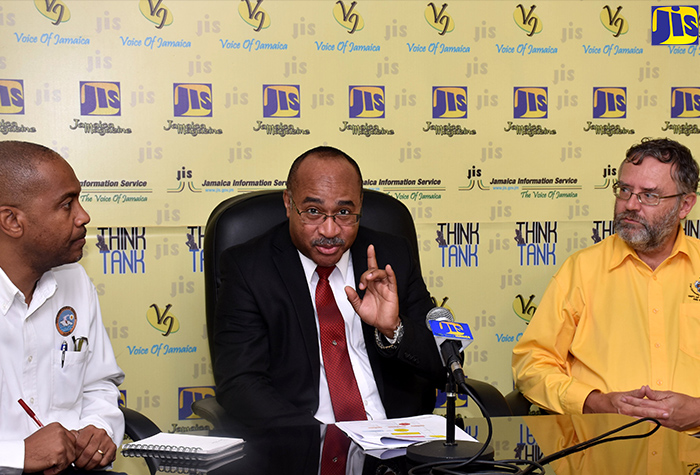Capacity to Respond to Tsunami Adequate – ODPEM
By: , January 11, 2018The Key Point:
The Facts
- An earthquake measuring 7.6 on the Richter scale, with the epicentre at latitude 17.5 north, longitude 83.6 west at a depth of 20 miles, occurred between the coast of Honduras and the Cayman Islands, resulting in the tsunami threat for Jamaica.
- In the meantime, ODPEM is advising residents of coastline communities that in the event of a tsunami, they might not feel an earthquake, but if they see the sea withdraw to an unusual distance or hear a loud rumble or roar, they are to immediately seek safety and protection at higher ground.
The Full Story
Director General of the Office of Disaster Preparedness and Emergency Management (ODPEM), Major Clive Davis, says the island’s capacity to respond to a tsunami or an earthquake is adequate.
Major Davis pointed out that the response by State agencies to the tsunami threat on Tuesday (January 9) was rapid. The threat was later downgraded.
An earthquake measuring 7.6 on the Richter scale, with the epicentre at latitude 17.5 north, longitude 83.6 west at a depth of 20 miles, occurred between the coast of Honduras and the Cayman Islands, resulting in the tsunami threat for Jamaica.
A tsunami advisory is usually issued if there is a threat, as its action can produce strong currents or waves which can prove to be dangerous to persons living near the coast. The threat of a tsunami may last for several hours after the arrival of the initial wave.
Speaking at a JIS ‘Think Tank’ on January 10, Major Davis pointed out that between 10:00 and 11:00 p.m. on January 9, the State agencies were communicating with each other, to respond to the tsunami if it impacted the island.
“We’re seeing an increasing collaboration among agencies and if they are that active when nothing has happened, it stands us in good stead were something to happen. I’m confident they will rise to the occasion,” he said.
In the meantime, ODPEM is advising residents of coastline communities that in the event of a tsunami, they might not feel an earthquake, but if they see the sea withdraw to an unusual distance or hear a loud rumble or roar, they are to immediately seek safety and protection at higher ground.
Local expert on earthquakes and tsunamis and Head of the Earthquake Unit at The University of the West Indies, Mona, Professor Simon Mitchell, said that although the earthquake or tsunami did not impact the island, there is still the potential for one to occur.
“We are on the northern marginal Caribbean plate and we are directly affected by earthquakes. One day there will be a tsunami in Jamaica. The trouble is we don’t know when. Last night’s earthquake was a big one, but it was a long way off (over 800 kilometres away), so no event was reported,” he said.
Head of the Meteorological Service, Evan Thompson, pointed out that a tsunami is not an atmospheric or meteorological phenomenon and so the unit did not have direct responsibility. However, he that because they have a 24-hour monitoring role, their participation was virtually automatic.
“Our role is to monitor the atmosphere around us. Information is broadcast to us in regular plain language, in coded messages and so tsunami warning messages have to be monitored. Our responsibility is to monitor and act immediately as any minute lost could lead to the loss of a life and when it comes to tsunamis, we don’t have a lot of time to act,” he said.

